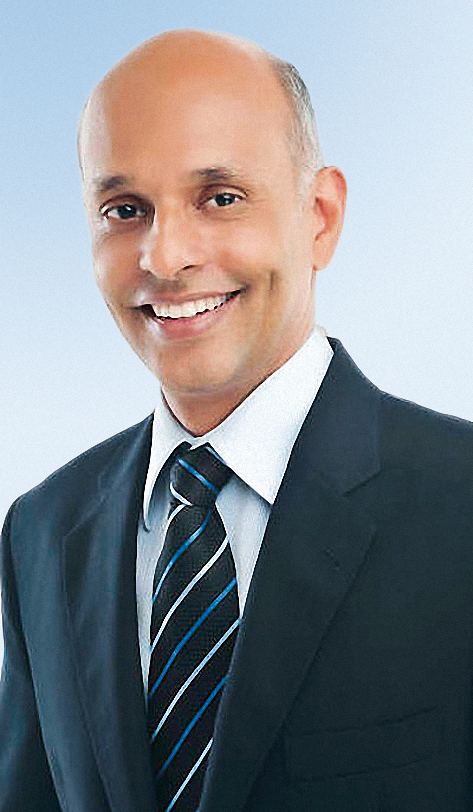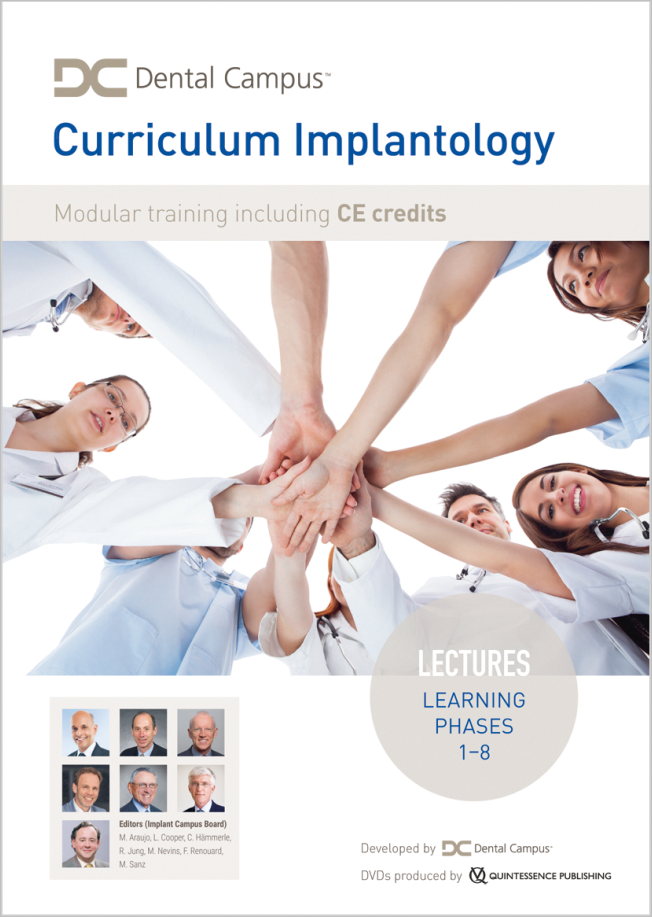International Journal of Periodontics & Restorative Dentistry, Pre-Print
DOI: 10.11607/prd.768711. lug 2025,Pagine 1-22, Lingua: IngleseCardaropoli, Daniele / Roffredo, Alessandro / Tamagnone, Lorenzo / Gaveglio, Lorena / Araujo, MauricioMultiple adjacent gingival recessions are a challenge to the practitioner. Although the gold standard is still the bilaminar technique, where a coronally advanced flap (CAF) is associated with autogenous connective tissue graft (CTG), the morbidity of the procedure may lead clinicians to look for CTG substitutes. In this study, a prospective case series, 16 patients presenting multiple adjacent gingival recession were treated using CAF plus a volume stable collagen matrix (VXCM) soaked with a gel made of polynucleotides and hyaluronic acid (PNHA). Clinical measurements (probing depth, recession, attachment level, keratinised mucosa) were performed at baseline (T0), six months (T1) and twelve months (T2) post-operatively. Change in gingival thickness (dGT) was also measured using intraolar scans at T0 and T2, together with secondary variables, such as wound healing indices, patient-reported outcomes (pain, esthetics), and adverse events. Statistical analysis has been performed, setting significance with p<0.05. At one year evaluation, mean recession depth decreased of 2.42 ± 0.45, the percentage of root coverage was 96.02 + 0.09% (80.59% complete root coverage) , while gingival thickness dGT increased by 1.14 ± 0.34 mm, indicating that VXCM and PN-HA plus CAF are a suitable option for the treatment of multiple adjacent gingival recessions.
Parole chiave: case series, mucogingival surgery, periodontal plastic surgery, periodontal surgery, polynucleotides
International Journal of Periodontics & Restorative Dentistry, 6/2022
Solo onlineDOI: 10.11607/prd.6124Pagine e161-e174, Lingua: IngleseVelasquez, Diego / Araújo, Mauricio G / Clem, Donald S / Gunsolley, John C / Heard, Rick H / Janakievski, Jim / McClain, Pamela K / McGuire, Michael K / Misch, Craig M / Nevins, Marc / Pickering, Steve / Pope, Bryan / Richardson, Chris / Santarelli, Greg / Scheyer, E Todd / Schallhorn, Rachel / Toback, GregoryPostextraction bone grafting and implant placement help preserve alveolar bone volume. Collagen wound dressings and soft tissue graft substitutes may help protect extraction socket bone grafts and provide better gingival contours. This randomized, controlled, multicenter, and double-blinded study was conducted to compare a control (wound dressing) and a test (soft tissue graft) substitute in nearly intact extraction sockets. Both test and control sockets were grafted with a xenogeneic bone graft. Graft containment, extraction socket soft tissue gap closure, gingival contour, and gingival thickness were examined over 16 weeks, at which time implants were placed. Healing was uneventful for both groups, and there was no significant difference (P < .05) between the times required to close the extraction socket soft tissue gap (~80% of sites closed by 8 weeks). Bone grafts were covered and contained longer in the test group (~4 weeks vs ~2 weeks), with less contour disruption out to 4 weeks; however, at implant placement, soft tissue contours in both groups were comparable, and soft tissue thicknesses were not significantly different.
International Journal of Periodontics & Restorative Dentistry, 5/2022
Solo onlineDOI: 10.11607/prd.5773Pagine e143-e151, Lingua: IngleseLevine, Robert A / Dias, Debora R / Wang, Ping / Araújo, Maurício GThe aim of this cohort study was to assess the effect of connective tissue graft (CTG) following immediate implant placement (IIP) at maxillary central incisors on esthetic outcomes, buccal bone thickness, soft tissue dimensional alterations, and patient-centered outcomes. Twenty-eight patients treated with IIP at maxillary central incisor sites with approximately 6 ± 4 years in function were divided according to the use of CTG (n = 17) or no CTG (n = 11). The primary variable of the study was the Pink and White Esthetic Score (PES/WES), evaluated in photographs taken before and after implant placement. The thickness of the buccal bone, midbuccal mucosal level (MBML) changes, and patient satisfaction were assessed and compared between the two groups. The results showed similar PES/WES before IIP between the CTG and no-CTG groups (13.5 ± 3.7 and 12.6 ± 3.2, respectively). After IIP, the PES/WES value in the CTG group was significantly higher (15 ± 2.5) than in the no-CTG group (12.1 ± 3.1) (P = .012). No significant differences in the buccal bone thickness, MBML, or patient satisfaction were observed in CTG and no-CTG groups. This study found that CTG following IIP and socket grafting promoted better esthetic outcomes.
International Journal of Periodontics & Restorative Dentistry, 6/2020
DOI: 10.11607/prd.4571, PubMed ID (PMID): 33151198Pagine 907-916, Lingua: IngleseBotelho, Sabrina V. / Perussolo, Jeniffer / Misawa, Mônica Y. O. / Zadeh, Homayoun H. / Araújo, Mauricio G.The aim of this study was to describe the basal bone and alveolar process in the maxillary anterior region by assessing patient CBCT scans. Parasagittal reconstructions were made to quantify basal bone and alveolar process dimensions and inclination of teeth in the maxillary anterior region. The CBCT scans of 87 patients and 522 tooth sites were included in this study. The results showed that the surface areas of the basal bone, alveolar process, and palatal triangle varied from 22.1 to 54.1 mm2, 87.8 to 144.0 mm2, and 37.1 to 66.0 mm2, respectively. The basal bone in the canine region had a significantly smaller cross-sectional area than in the incisor region. The alveolar process in the canine region was markedly larger than those of the central and lateral incisor regions. The mean overall thickness of the alveolar facial bone at 3, 5, and 7 mm above the CEJ were 0.6 ± 0.5 mm, 0.9 ± 0.5 mm, and 0.7 ± 0.6 mm, respectively. Additionally, the findings demonstrated that the cross-sectional area of the alveolar process and palatal triangle were greater among men than women. The study identified significant anatomical differences among various tooth regions in the anterior maxilla. The results also demonstrated that the tooth type, but not the tooth inclination or apex location, correlates with the size of the alveolar process.
International Journal of Periodontics & Restorative Dentistry, 2/2008
PubMed ID (PMID): 18546808Pagine 123-135, Lingua: IngleseAraújo, Mauricio / Linder, Elena / Wennström, Jan / Lindhe, JanThe objective of the present experiment was to evaluate the effect on hard tissue modeling and remodeling of the placement of a xenograft in fresh extraction sockets in dogs. Five mongrel dogs were used. Two mandibular premolars (4P4) were hemisected in each dog, and the distal roots were carefully removed. In one socket, a graft consisting of Bio-Oss Collagen (Geistlich) was placed, whereas the contralateral site was left without grafting. After 3 months of healing, the dogs were euthanized and biopsies sampled. From each experimental site, four ground sections (two from the mesial root and two from the healed socket) were prepared, stained, and examined under the microscope. The presence of Bio-Oss Collagen failed to inhibit the processes of modeling and remodeling that took place in the socket walls following tooth extraction. However, it apparently promoted de novo hard tissue formation, particularly in the cortical region of the extraction site. Thus, the dimension of the hard tissue was maintained and the profile of the ridge was better preserved. The placement of a biomaterial in an extraction socket may promote bone modeling and compensate, at least temporarily, for marginal ridge contraction.




